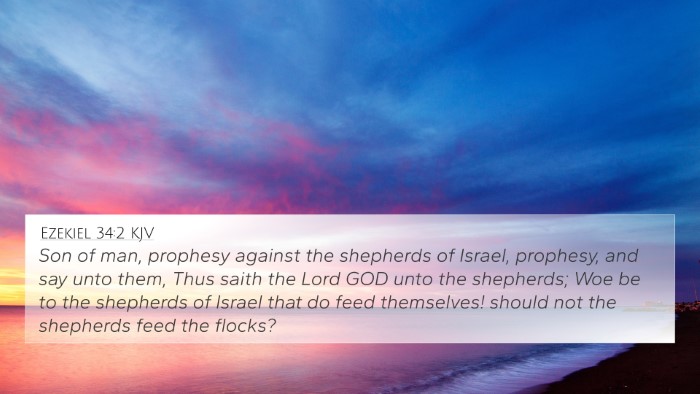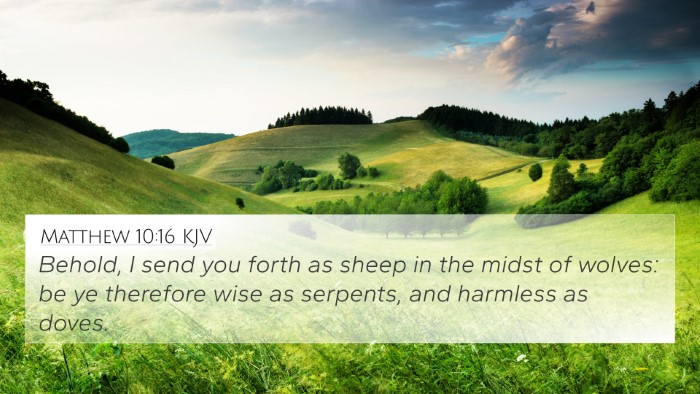Understanding John 10:12
In the Gospel of John, specifically in John 10:12, Jesus declares: “But he that is an hireling, and not the shepherd, whose own the sheep are not, seeth the wolf coming, and leaveth the sheep, and fleeth: and the wolf catcheth them, and scattereth the sheep.” This verse highlights the distinction between genuine shepherds and hirelings, offering profound insights into the nature of true leadership and care within the Christian faith.
Overview of Content
- Examination of the term “hireling”
- The role of the shepherd
- Implications for Christian leadership
- Connections to other Bible verses
1. Examination of the Term “Hireling”
In this passage, Jesus uses the term "hireling" to refer to those who work for pay rather than out of genuine concern for the sheep. Matthew Henry notes that hirelings lack the commitment and responsibilities of true shepherds. Their primary motive is self-serving, leading them to abandon the flock in times of danger. Jesus contrasts this behavior with that of a true shepherd who lays down his life for the sheep, demonstrating sacrificial love.
2. The Role of the Shepherd
According to Albert Barnes, the shepherd's role is characterized by devotion and love towards his flock. The true shepherd knows his sheep and is willing to protect them, as stated in John 10:11, where Jesus identifies Himself as the Good Shepherd. Adam Clarke emphasizes that a genuine leader confronts danger head-on, ensuring the safety of those entrusted to their care.
3. Implications for Christian Leadership
From this verse, Christians are encouraged to reflect on their own roles as leaders, teachers, and caretakers within their communities. The distinction between a hireling and a shepherd serves as a critical reminder of the importance of true commitment, responsibility, and the willingness to sacrifice for others. Commentators like Clarke and Henry highlight that genuine Christian leadership demands selflessness and a deep relational understanding with those one leads.
4. Connections to Other Bible Verses
John 10:12 is rich with cross-references that illuminate its meaning:
- John 10:11 - Jesus identifies Himself as the Good Shepherd.
- Matthew 7:15 - A warning against false prophets who come in sheep's clothing.
- Luke 15:4-7 - The parable of the lost sheep emphasizes the value of each individual in the flock.
- Hebrews 13:20 - Jesus is referred to as the great Shepherd of the sheep.
- 1 Peter 5:2-3 - Paul instructs elders to shepherd the flock with care, contrasting self-interest with servanthood.
- Isaiah 40:11 - The shepherd's care for the flock connects to God's loving guidance.
- Ezekiel 34:10 - God condemns the hireling shepherds of Israel who neglect their responsibilities.
- John 10:14 - Jesus reinforces His role as the Good Shepherd, emphasizing His knowledge of the sheep.
- Matthew 18:12-14 - Further illustrations of the shepherd searching for the lost sheep.
- Jeremiah 23:1-4 - God critiques unfaithful leaders and promises to raise up faithful shepherds.
Conclusion
In summary, John 10:12 serves as a powerful reminder about the nature of true leadership in the Christian worldview. By contrasting the hireling's abandonment with the shepherd's commitment, Jesus calls His followers to embrace sacrificial love and responsibility within their communities. Through the careful analysis of this verse alongside its rich biblical connections, believers can gain a deeper understanding of their faith and the model of care exhibited by Christ.
SEO Content and Thematic Analysis
For those seeking deeper insights into the connections between Bible verses, tools for Bible cross-referencing such as a Bible concordance or a Bible cross-reference guide can be invaluable. Such resources allow believers to explore the thematic Bible verse connections that run throughout Scriptures, enhancing one’s understanding of inter-Biblical dialogue.
To explore more comparative Bible verse analysis or links between various scriptures, many find it helpful to engage in cross-referencing Bible study methods. Identifying connections between the Old and New Testaments can deepen one's faith and comprehension of God’s overarching narrative.
This verse, therefore, is not only a standalone text but part of a larger tapestry of scriptural cross-referencing that unveils profound theological truths. Engaging with these interconnected verses can enrich sermon preparation and assist individuals in interpreting Biblical themes more accurately.















